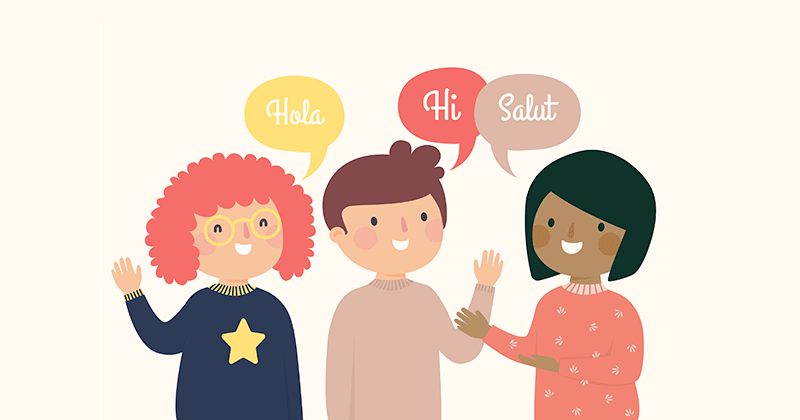Teenagers are ideally positioned to acquire second and third languages. Their brains are still developing, and they are able to learn new languages more quickly and easily than adults. Additionally, teenagers are often motivated to learn new languages, as they may be interested in studying abroad, traveling to other countries, or pursuing a career that requires language skills.
Learning a second or third language offers teenagers a number of benefits, including:
- Improved cognitive function. Studies have shown that bilingual and multilingual teenagers have better cognitive function than monolingual teenagers. This is because learning a new language requires teenagers to use a variety of cognitive skills, such as memory, attention, and problem-solving.
- Enhanced academic performance. Bilingual and multilingual teenagers tend to perform better in school than monolingual teenagers. This is because learning a new language helps teenagers to develop their critical thinking skills and to learn more effectively.
- Greater career opportunities. Bilingual and multilingual teenagers are in high demand in the global workplace. They have access to a wider range of jobs and opportunities than monolingual teenagers.
- Increased cultural awareness. Learning a new language helps teenagers to learn about and appreciate different cultures. This can make them more open-minded and tolerant of others.
Tips for helping teenagers acquire second and third languages
There are a number of things that teenagers can do to improve their second and third language acquisition skills. Here are a few tips:
- Immerse themselves in the language. One of the best ways to learn a new language is to immerse yourself in it. This means surrounding yourself with the language as much as possible. Teenagers can immerse themselves in a new language by listening to music, watching movies and TV shows, reading books and articles – paper and digital, and talking to native speakers.
- Take language classes. Taking language classes can provide teenagers with a structured and supportive environment for learning a new language. Language classes can also help teenagers to meet other language learners and to practise their language skills in a group setting.
- Find a language partner. A language partner is someone who is fluent in the language that you are learning and who is willing to help you practise your language skills. Teenagers can find language partners online or through local language schools and community organisations.
- Use technology. There are a number of technology tools that can help teenagers to learn a new language. For example, there are language learning apps, websites, and online courses that can provide teenagers with interactive and engaging learning experiences. The BiblioLingua project can also be a big help in a language learning process.
How the BiblioLingua project can help
- Select books that are available in multiple languages. This way, teenagers can read the same book in both their native language and in their second or third language.
- Read aloud to teenagers in both languages. This is a great way to expose them to the language and to help them develop their listening skills.
- Talk about the books with teenagers in both languages. This will help them to develop their speaking skills and to deepen their understanding of the stories.
- Encourage teenagers to act out the stories or to create their own versions of the stories in the second or third language. This is a fun and engaging way for teenagers to practise the language.
The lesson plans and pedagogical files we created can give you some ideas on how to make the language process a lot more engaging and interesting for your students.
References
- Bialystok, E., Craik, F. I., & Luk, G. (2005). Cognitive control and bilingualism: Isolate inhibition in young adults and preschool children. Cognitive Psychology, 50(3), 201-226.
- Cummins, J. (2000). Language, power and pedagogy: Bilingual children in the classroom. Bilingual Education & Bilingualism, 3(1), 3-45.
- Kharkhurina, S. N., & Bialystok, E. (2014). Bilingualism and academic achievement: Current perspectives and future directions. Child Development Perspectives, 8(1), 3-8.
- Ramirez, J. D., & Benes, S. (2010). Bilingual education and cognitive outcomes: Research evidence and implications for practice. Bilingual Education & Bilingualism, 13(4), 433-441.
- Genesee, F., Paradis, J., & Crago, M. B. (2004). Dual language development and disorders: A handbook on bilingualism and second language learning. Paul H. Brookes Publishing.

